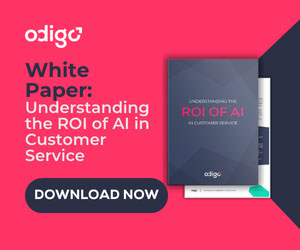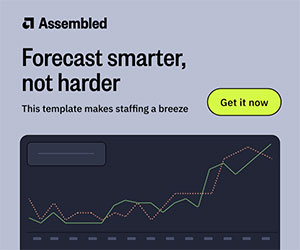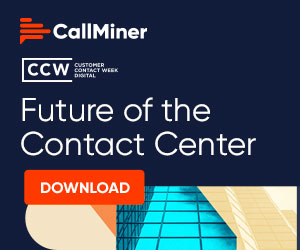Elisabeth De Longeaux at Odigo explains that today, beyond the technological feats of AI, automation and the cloud, the focus of contact centre managers should remain on customers.
This means that selecting Contact Centre as a Service (CCaaS) solution that works with existing customer relationship management (CRM) solutions should be a top priority for every contact centre manager.
As a result of the technological possibilities available to them, customers expect smooth communication with brands across multiple channels and devices, With all interactions linked into one conversation.
The diversification of channels (social media, instant messaging, SMS, email, phone) and the rise of conversational agents (bots) has only further increased the pressure to provide a coherent, channel-less experience.
Robust Cloud-based Contact Centre as a Service (CCaaS) Solutions make this possible. Resilient and easy to implement, they have also proven effective at swiftly adjusting to customer volumes, providing the necessary Scalability to deal with peaks and troughs as they develop.
How? Because one of the key driving forces behind cloud-based CCaaS solutions is up-to-date, high-quality data leveraged to better understand customers and prospects alike. And with the acceleration of cloud adoption, contact centre managers know that collecting, managing and operationalising data has never been more important.
But where does this data come from? The answer is simple: Most of it should already be present in your CRM database!
CRM Integration With CCaaS Solutions Deliver Agility and Dependability
What is a CRM? Customer relationship management (CRM), in the words of Salesforce, a leading global cloud-based customer relationship management service provider, is “any tool, strategy, or process that helps businesses better organise and access customer data.”
A CRM solution enhances an organisation’s operations by concentrating on interactions with customers, through service-related issues, direct and indirect sales, forecasting and analysis of behaviours.
It enables the elevation of customer experience (CX) in four key areas: sales, marketing, customer service and digital commerce. However, a CRM is only as good as the data in its database, and it is therefore critical to ensure that this data is both readily available and reliable.
With 62% of companies increasing their investments in customer service, contact centre managers know that operationalising their organisation’s data is the key to keeping pace with ever-rising customer demands.
Regardless of their industry, their organisations must therefore use dependable contact centre solutions that integrate with their CRM software.
The integration of a CRM with a CCaaS solution typically follows a four-step plan:
- A one-to-two-month immersion phase between the business and IT teams, which gives experts from both sides the needed time to understand the solutions and receive adequate training.
- An identification of key processes to enable the cloud platform to be perfectly integrated into a company’s infrastructure (ecosystem) through open APIs.
- A test phase which allows for the exploration of features and modification of functionalities, to ensure the integration of CRM and CCaaS is ideally customised to meet customer experience goals.
- Once the accuracy and effectiveness of the integration is confirmed, the production launch completes the integration process.
The integration of a CRM with a CCaaS solution results in benefits for customers and contact centre agents alike. Agents enjoy intuitive tools that encourage them to be more engaged in work they are skilled at doing, but also help them perform at higher levels through enhanced customer views and up-to-the-minute data.
Customers are rewarded with memorable interactions as a result of the more effective service they receive.
These improved relationships with a brand can deliver bottom line benefits to the business and mean not only higher retention rates, but also increased reputational prestige resulting from a best-in-class customer experience that increases loyalty and drives revenue.
Emerging Trends Present Challenges and Opportunities for CRM Integration and CCaaS Solutions
With customer expectations changing, contact centre managers need to adopt customer-centric strategies.
In this regard, the most significant development in consumer behaviour is connected to voice, which is fast becoming the most important medium of customer-brand communication, on top of being the most important one for customer service via phone channel.
Research from decision behavior agency Skim Group shows that 40% of British, American, and German users have made at least one purchase via a digital assistant on their smartphone or smart speaker. Indeed, the proliferation of voice assistants is staggering, with a 2021 survey stating 7 in 10 UK consumers had used a voice-assistant over the previous month.
Voicebots have proven adept at understanding customers’ needs, delivering engaging customer experience and achieving personalised service.
It is abundantly clear that as voice channels gain in popularity, through IVR and phone use, contact centre agents must have access to the rich set of data unlocked by coalescing CRM and CCaaS technologies to deliver excellent customer experience on the voice channel. As CRM providers do not provide voice channels, they must link with CCaaS solutions that can.
Author: Guest Author
Published On: 18th Nov 2021 - Last modified: 20th Jan 2023
Read more about - Archived Content, Odigo




































